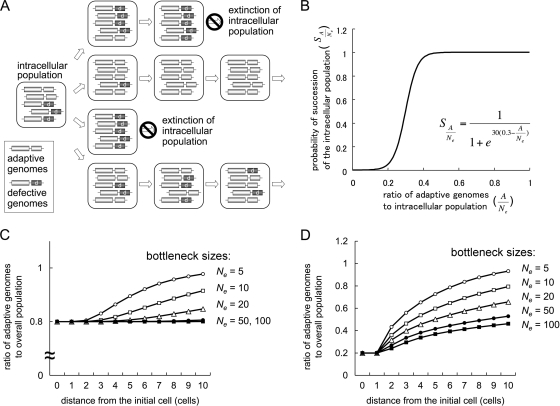FIG. 6.
Idea and simulation results of effective selection on trans-acting elements due to narrow genetic bottlenecks. (A) Schematic representation of a mechanism for effective selection on trans-acting elements. Narrow genetic bottlenecks in cell-to-cell movements stochastically isolate adaptive genomes from defective genomes, resulting in rapid selection for adaptive genomes. (B) Modeling of competition among intracellular populations by describing their probabilities of succession (S) with respect to the proportion of adaptive genomes in the intracellular population  . (C) Simulation of the exclusion of defective genomes with different bottleneck sizes (Ne). Note that initial ratios of adaptive and defective genomes are 80% and 20%, respectively. (D) Simulation of the selection of adaptive genomes with different bottleneck sizes (Ne). Initial ratios of adaptive and defective genomes are 20% and 80%, respectively.
. (C) Simulation of the exclusion of defective genomes with different bottleneck sizes (Ne). Note that initial ratios of adaptive and defective genomes are 80% and 20%, respectively. (D) Simulation of the selection of adaptive genomes with different bottleneck sizes (Ne). Initial ratios of adaptive and defective genomes are 20% and 80%, respectively.

